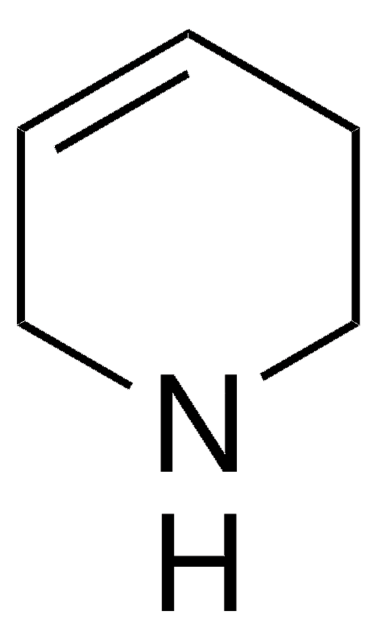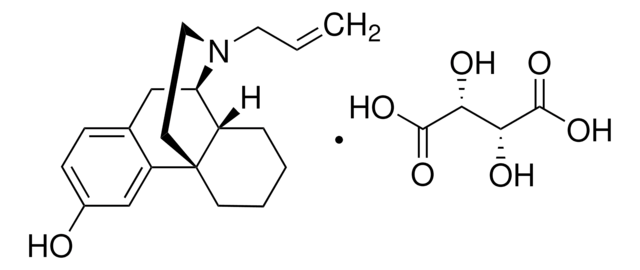M0896
MPTP Hydrochloride
≥98% (AgNO3), powder, dopaminergic neurotoxin
Synonym(s):
MPTP HCl, Pyridine, 1,2,3,6-tetrahydro-1-methyl-4-phenyl-, hydrochloride, MPTP hydrochloride
About This Item
Recommended Products
product name
1-Methyl-4-phenyl-1,2,3,6-tetrahydropyridine hydrochloride, powder
form
powder
Quality Level
drug control
kontrollierte Droge in Deutschland
color
white to off-white
SMILES string
Cl[H].CN1CCC(=CC1)c2ccccc2
InChI
1S/C12H15N.ClH/c1-13-9-7-12(8-10-13)11-5-3-2-4-6-11;/h2-7H,8-10H2,1H3;1H
InChI key
KOWJANGMTAZWDT-UHFFFAOYSA-N
Looking for similar products? Visit Product Comparison Guide
General description
Application
- to study the effect of docosahexaenoic acid on the apelin distribution of the nervous system
- to study the behavioral impairments correlated to neurochemical deficits
- to study the effects of treadmill exercise on neuroprotection and neuroinflammation
Biochem/physiol Actions
Warning
Signal Word
Danger
Hazard Statements
Precautionary Statements
Hazard Classifications
Acute Tox. 3 Oral - STOT SE 1
Target Organs
Nervous system
Storage Class Code
6.1C - Combustible acute toxic Cat.3 / toxic compounds or compounds which causing chronic effects
WGK
WGK 3
Certificates of Analysis (COA)
Search for Certificates of Analysis (COA) by entering the products Lot/Batch Number. Lot and Batch Numbers can be found on a product’s label following the words ‘Lot’ or ‘Batch’.
Already Own This Product?
Find documentation for the products that you have recently purchased in the Document Library.
Customers Also Viewed
Our team of scientists has experience in all areas of research including Life Science, Material Science, Chemical Synthesis, Chromatography, Analytical and many others.
Contact Technical Service














